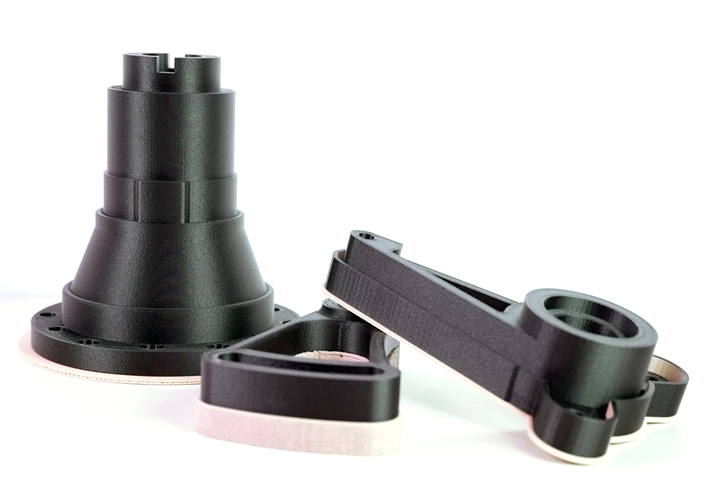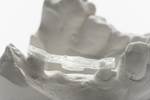Raise3D launches fused filament fabrication 3D printer aimed at small-batch production
The large-format RFM500 fabricates carbon fiber-reinforced end-use parts with industrial-grade precision and repeatability.

Carbon fiber-reinforced parts developed via the RFM500 printer. Photo Credit: Raise3D
Raise3D (Rotterdam, Netherlands and Irvine, Calif., U.S.), a global provider of additive manufacturing (AM) solutions for small- and large-scale enterprises, launches the Raise3D RMF500, a large-format fused filament fabrication (FFF) 3D printer aimed at small-batch production in the industrial sector. The printer can fabricate carbon fiber-reinforced end-use parts with highly accurate production repeatability, high speed and large build volumes.
The RMF500 has a 500 x 500 x 500 mm build area. It can reach print speeds of up 300 mm/s along with an acceleration of up to 2G and movement of up to 1,000 mm/s. An independent dual extruder system (IDEX) also makes it possible to execute two print jobs simultaneously.
Linear motors help the RMF500 achieve an accuracy of 0.001 mm along the X and Y axes and 0.0009765 mm along the Z-axis. Its 1 μm closed-loop, synchronous control reduces speed variations with load changes of the motor, further enhancing precision.
Use of a carbon fiber-reinforced filament is said to ensure reliable printing of strong end-use parts and a good alternative to metal parts. The material offers high rigidity, a low shrinkage ratio and does not require a heated chamber to avoid warping, as is customary in 3D printing. According to Raise3D, this leads to a far more efficient printer that does not need to draw so much power; for example, 120 watts is used to power a single hotend.
Moreover, for trouble-free, uninterrupted printing, the RMF500 is equipped with four 2.5-kg cartridges (main and auxiliary) so the 3D printer can switch automatically between main/auxiliary cartridges, reducing the need for constant intervention. Positive pressure humidity control keeps chamber humidity under 5% relative humidity.
RMF500 offers additional benefits. The 3D printer’s load-bearing structural parts are made of high-grade hardened steel, with a Z-axis that can withstand a maximum load close to 100 kg and has a deflection error that is reported to be 50% lower than that of conventional offerings. The linear motor driven system also has low clearance and low maintenance requirements.
Related Content
-
One-piece, one-shot, 17-meter wing spar for high-rate aircraft manufacture
GKN Aerospace has spent the last five years developing materials strategies and resin transfer molding (RTM) for an aircraft trailing edge wing spar for the Airbus Wing of Tomorrow program.
-
A new era for ceramic matrix composites
CMC is expanding, with new fiber production in Europe, faster processes and higher temperature materials enabling applications for industry, hypersonics and New Space.
-
Plant tour: Spirit AeroSystems, Belfast, Northern Ireland, U.K.
Purpose-built facility employs resin transfer infusion (RTI) and assembly technology to manufacture today’s composite A220 wings, and prepares for future new programs and production ramp-ups.
















